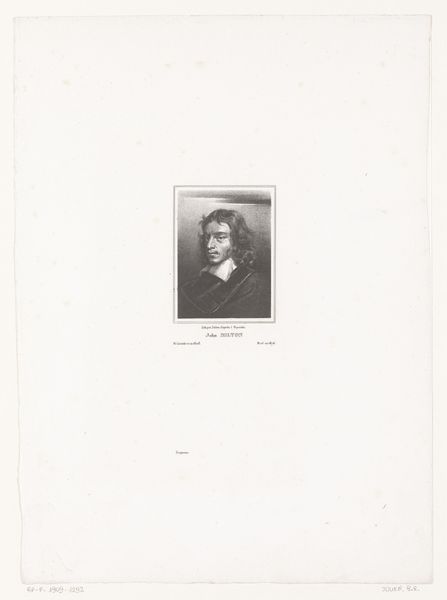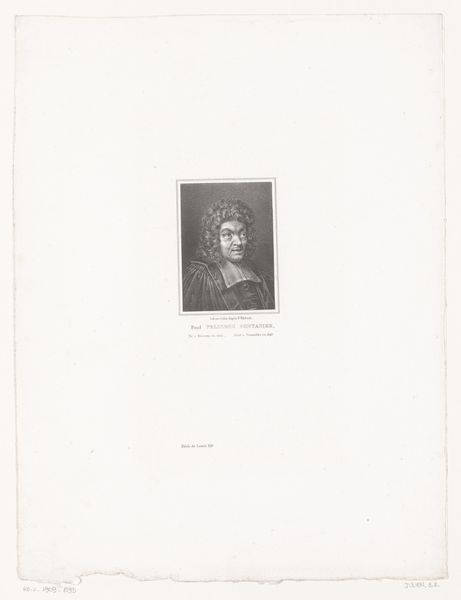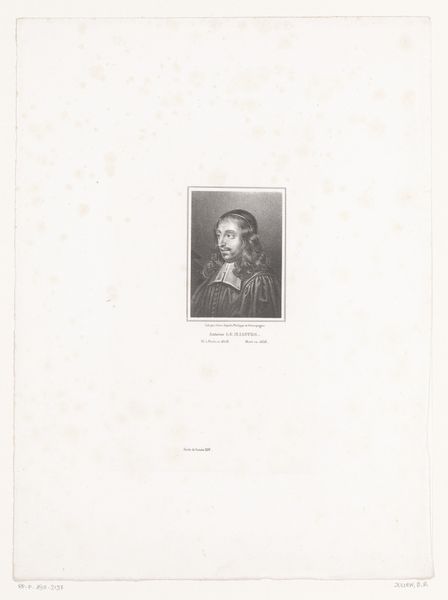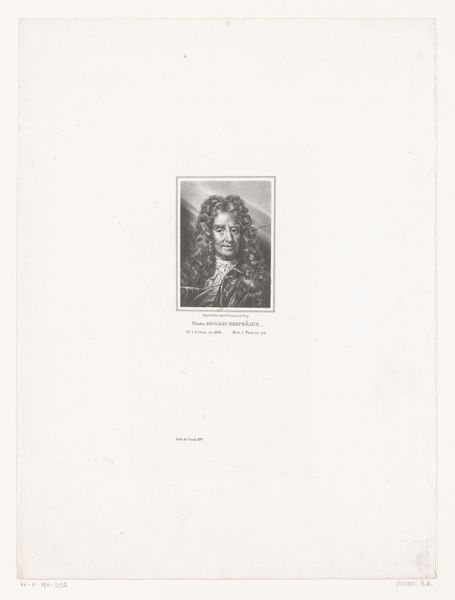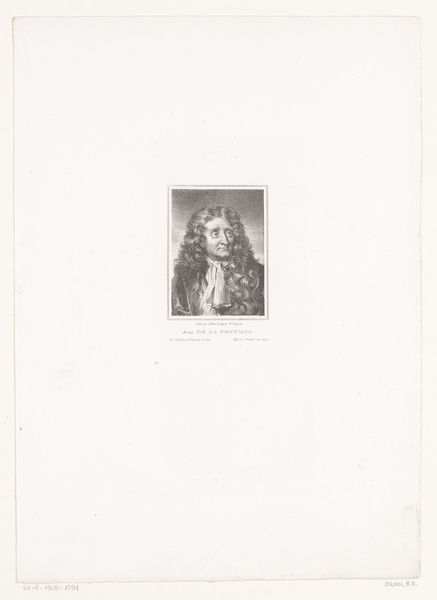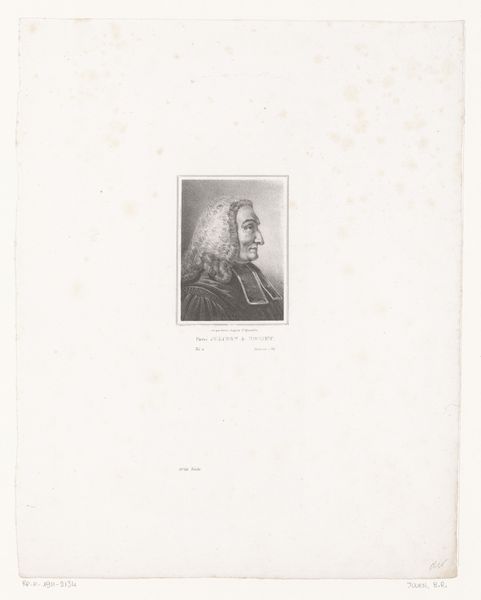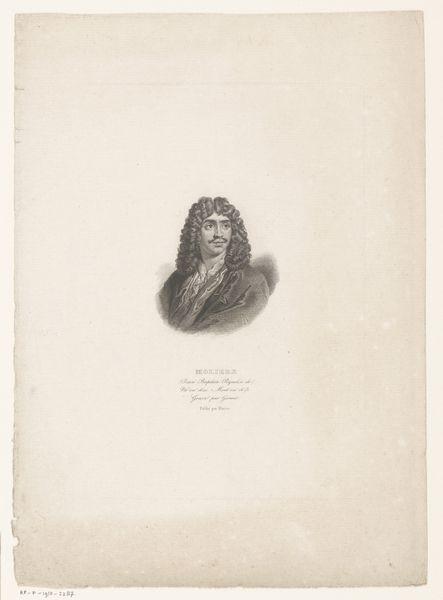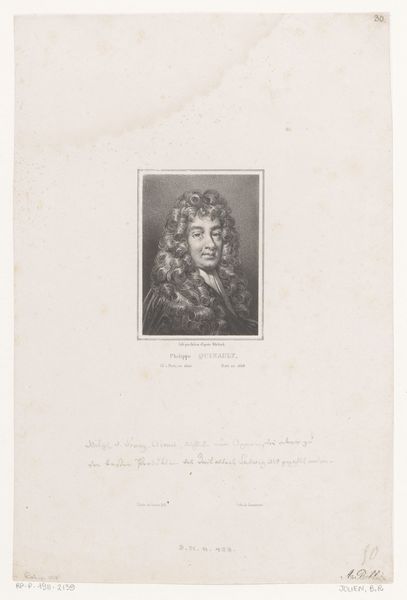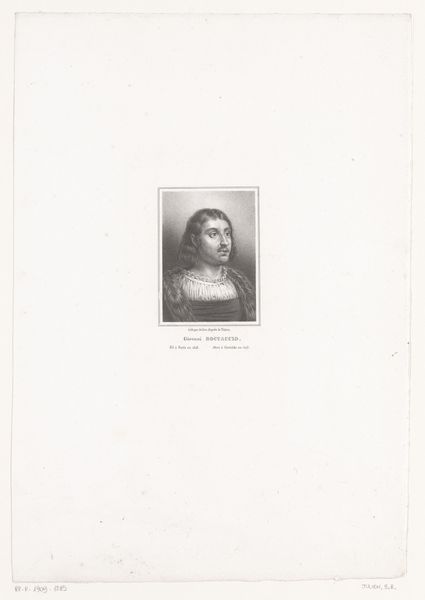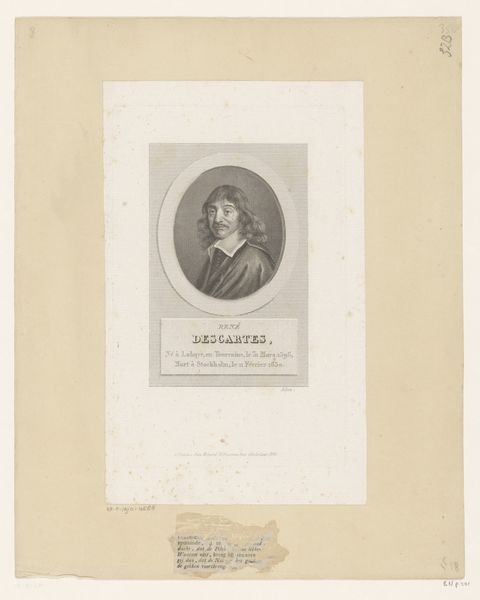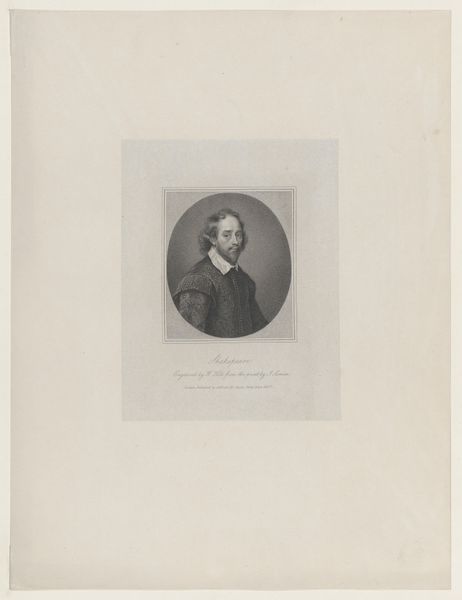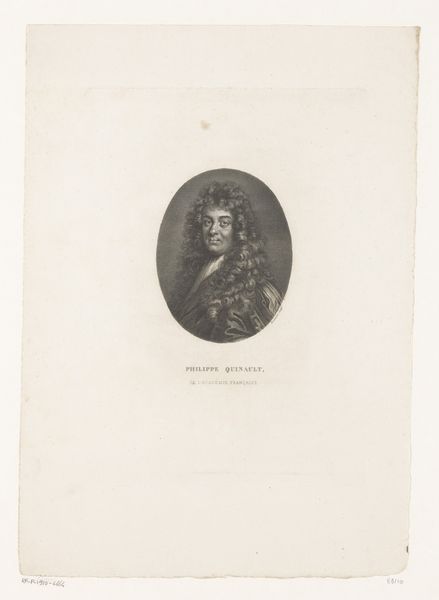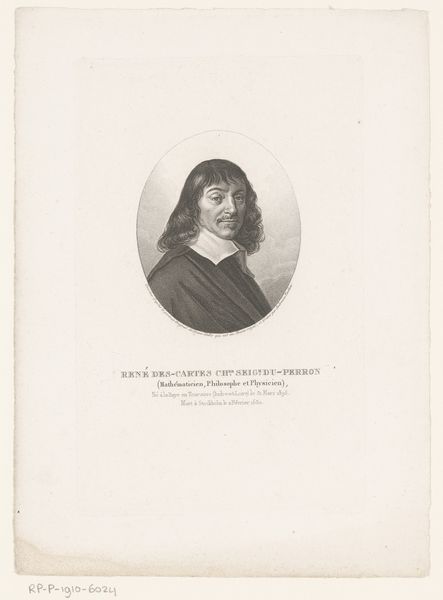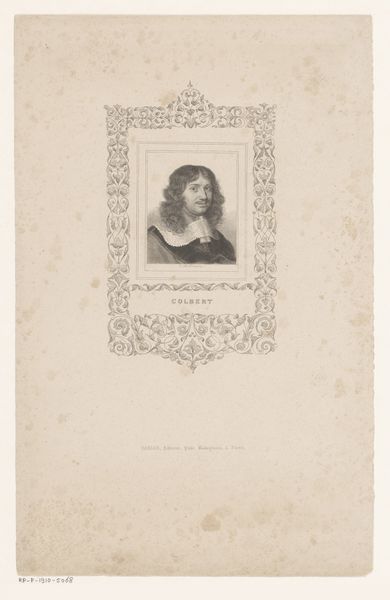
drawing, pencil
#
portrait
#
pencil drawn
#
drawing
#
romanticism
#
pencil
#
pencil work
#
realism
Dimensions: height 336 mm, width 251 mm
Copyright: Rijks Museum: Open Domain
Curator: Here we have a pencil drawing from 1830 by Bernard Romain Julien, titled "Portret van Jean-François Sarrasin." What’s your immediate impression? Editor: Well, it's delicate! There's something almost ethereal about it. I mean, a face emerging from that subtle shading…it feels like conjuring a memory. A little melancholic, maybe? Curator: Yes, that aligns with the Romanticism movement, influential at the time, focusing on emotion and individualism. Pencil drawings offered an immediacy and intimacy not achievable with paint, aligning with bourgeois values and wider material access in contrast to the oil paintings typically commisioned by the elite. Editor: Interesting to consider the material accessibility! For me though, that focus really allows the eye to be drawn in and locked in. There's no wild detail, but everything seems incredibly precise. The texture of his hair and collar…the turn of his lip. What labor went into that? Curator: Julien was a master lithographer, actually. One can almost imagine the printing press—labor and technical expertise became aligned within his skill set. Editor: Ah, you see the press, I see just hands shaping form and shadow... But regardless, look at how light interacts with the paper's surface! There are subtle textures that suggest depth and volume, not just likeness. The very medium—graphite on paper—almost vanishes as he reveals his subject's character. Curator: Character formed through very specific technical practices embedded in the broader political and material history of the moment. But yes, even that simple combination can suggest an entire emotional landscape! The efficiency, in the artist's hand and in the means of distribution and production, adds a curious tension, perhaps heightening its quiet strength. Editor: I love how those supposed limitations give so much room to imagination. Looking closely reminds me that artistic statements can rise to timelessness if made within specific materials—like ink, wood, charcoal and here, pencil. The subject and tool have an artistic bond beyond their use. Curator: Indeed. Reflecting on this portrait reminds us of the potent connection between the tools, methods, and visions driving art, as well as, of course, their sociohistorical roots. Editor: Absolutely, leaving one pondering where the artist ends, and the subject, process and moment, begin.
Comments
No comments
Be the first to comment and join the conversation on the ultimate creative platform.
